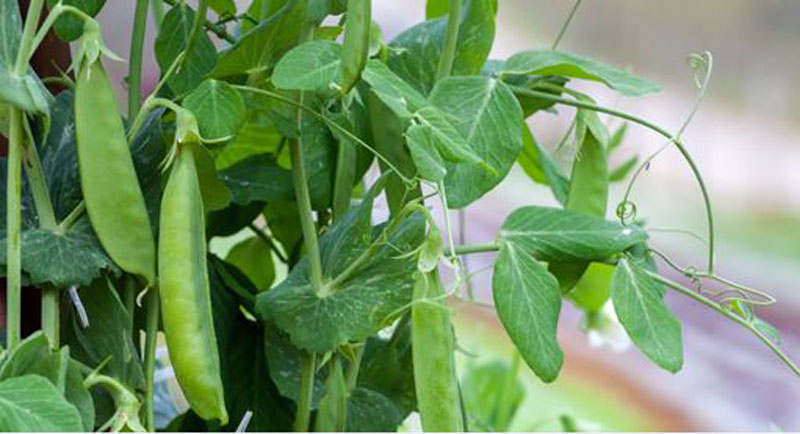How to grow peas – Peas are vegetables that are easy to cultivate. For beginners who want to grow vegetables, peas can be an alternative for you. Peas have many types, generally they have straight elongated fruits in green.
Not only are peas good to cultivate but they are also rich in nutrients such as vitamins A, B, and vitamin C. In addition, peas are also rich in fiber which is good for digestive health.
Below, we explain the procedure for cultivating peas in 11 steps.
How to Grow Peas
Planting nuts is an easy affair, but if you want the results to be abundant, you have to know how. Next, step by step to grow peas.
1. Planting location
Planting peas must be in a place that gets full sun. Areas with warm climates are very suitable for cultivating peas.
2. Choose the type of peas
Peas have many variations. Choose which type you want to plant. But note, sometimes some types are not suitable for planting in your place. So, pay attention and read the label of the packaging when you buy seed peas.
3. Seed preparation
The next stage of planting peas is to prepare the seeds. To get good seeds you can go to other farmers. Remember! errors in selecting can cause pea plants to experience slow growth.
If you do not get seeds from other farmers, you can buy dried or frozen seeds.
Also read: How to Grow Avocados: Types of Avocado, Best Climate and Care
4. Preparing land (soil)
The land for planting peas must be loosened and mixed with fertilizer. Actually, peas are plants that produce nitrogen gas, so farmers no longer need to provide UREA fertilizer.
They just add fertilizer with only K and N elements. For those in Indonesia, they can use “POWER NUTRITION” fertilizers. Spraying can be given “NASA POC” and “HORMONIC”.
5. Planting seeds
Next step is planting seeds. The seeds are planted directly on the land that has been cultivated before and has been prepared. Before planting seeds, the soil should be watered slowly with water.
The goal is to make the soil moist, but not too much water because it can flood the water.
Also see: Top 13 Fastest Growing Trees
6. Use support tools
This support tool is useful to help the pea plants propagate because they are vines. You can use bamboo or bamboo twigs to propagate peas. Bamboo or wooden twigs are important because when the peas start to bear fruit they will droop and sag on the ground, then a supporting tool is needed.
Bamboo must be used on each plant to support it so that it does not break or fall to the ground.
7. Watering
The watering process is important because peas are a fast-growing type of plant. When watering, make sure the water meets every root system so that it can grow properly. But, it doesn’t need to be watered every day, it is the type that can survive in the dry.
A good watering time is in the morning or evening, where at that time the conditions are still cool.
8. Growth of peas
During this growth period, you have to do a little treatment. When the plant starts to appear peanut petals, then pick the shoots at the top.
This is not only useful for stimulating many branches, but also can slow down the growth process. The leaves that are picked can be used as vegetables for chili sauce.
See also: American Pillar Arborvitae – Fast Growing Privacy Hedge
9. Pest disorders
Pests in peas are usually rodents such as mice, rabbits, or other animals. If you have a problem with this, you have to cover the plants with a net to prevent them from coming.
Make a small pole on the side of the plant and cover it with a net that has a small hole. This will prevent pests from coming along while keeping the air flow smoothly.
10. Harvesting
If you want to consume nuts as a whole, harvest early when the petals have not hardened. This is usually a few days after the appearance of the pea petals.
Also see: 4 Radish Sprouts Benefits, Nutrition and Recipes
When the actual harvest for peanuts is when the seeds in the fruit petals begin to harden and are separated from one seed to another. Usually, this is characterized by fruit petals that begin to droop due to hardened bean seeds.
11. After harvest
What do you do after harvest? Of course, you enjoy the harvest. Peas can be made as soup, lettuce or porridge. While the rest of the plants can be returned to the ground.
All remaining pea plants should be buried into the soil to enrich soil nutrition because peas are nitrogen-producing plants.
Cut the plants to the roots, and put everything into the soil. This will enrich your soil so that it becomes fertile soil in the next harvest season.
